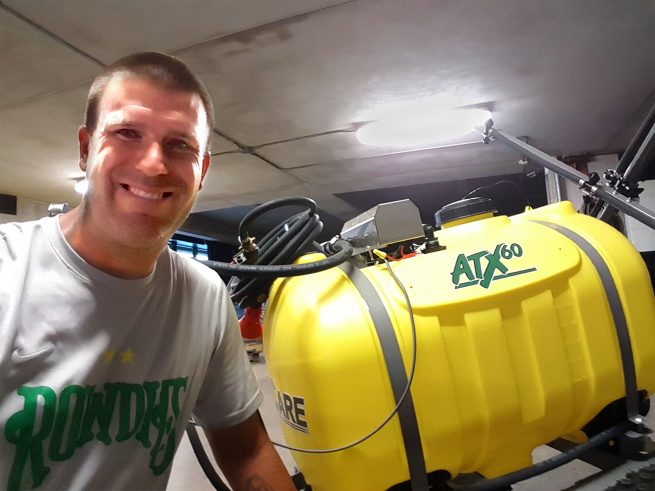When the Tampa Bay Rowdies hit the field at Al Lang Stadium in downtown St. Petersburg, Florida, they slide tackle, cross, and lob on top of the turf that Jeff Parkinson painstakingly manicured for years.
But Jeff approaches the project knowing it’s going to face that type of abuse.

Jeff must keep the turf healthy to minimize the chance of players getting injured.
The professional groundskeeper has worked with turf for much of his adult life, and worked on several golf courses through college and high school.
With the Rowdies, he’s in charge of two fields that are about 100,000 square feet of turf and he uses two 60-gallon CropCare sprayers to apply the fertilizer, nitrogen, and water management chemicals it needs to stay healthy and strong.
“I’m spraying year-round,” Jeff says.
“Every week, I’m keeping up with something out there.” The turf he maintains is a Celebration bermudagrass. When the bermudagrass goes dormant, he maintains a perennial rye.
“For me, because I’m down south, I spray early morning before it gets too hot, and I spray when the wind is low.”

- Get your measurements right on the chemicals by following label instructions, but first…
- Test with water in your sprayer to make sure you know exactly what you’re giving out in a designated area.
“I take a certain area, say, maybe 1 acre, and I put a certain amount in. I see how much it takes to spray that area and then figure it out per thousand square feet,” Jeff explains.
- Different nozzles put out at a different rate; determine which nozzle best suits your needs. (See Tips for Choosing the Right Sprayer Nozzle)
- Keep your sprayer equipment clean after each use to maintain proper pressure and output.
- Calibrate your sprayer at the start of each season and check/replace nozzles. Worn nozzles may increase the output, thus wasting product and money.
- For a rich, green turf, include a foliar iron spray in your maintenance plan.
- Apply a biostimulant weekly (Jeff suggests CytoGro with seaweed extracts) for optimal root growth.
Following are tips gathered from Perdue University Turfgrass Specialists, Penn State Center for Turfgrass Science, and Turfgrass Science at University of Florida:
- If sprigging a warm-season grass, more annual fertilizer may be needed (and avoid using a pre-emergence herbicide as it may inhibit rooting; read labels).
- Opt to use a nitrogen fertilizer that combines both soluble nitrogen with insoluble to reap the benefits of quick release and slow release.
- Check your product before spraying. Dry fertilizers dissolved in water may contain impurities that can clog your sprayer nozzles. Some liquid fertilizers can separate when stored for long periods of time in cold weather.
- Have a soil test done yearly to determine the proper amounts of nutrients needed. Consider a tissue test if turf problems persist.
- With any pesticide or fertilizer, it is extremely important that you read the entire label first. Follow the instructions when mixing and spraying the product.
- If possible, apply pesticides to turf during a period when turf traffic is limited for 24 hours.
- Use post-emergence annual grass herbicides and follow label instructions when using herbicides on seeding. If applying herbicide to foliage, wait for an extended dry weather forecast; if soil-applied, water it into the soil during or following application.
- When applying pre-emergence herbicide, apply about 10-14 days prior to the expected germination period.
- Liquid phosphorus application may improve seedling growth of cool-season grasses.
- Control weeds on the fields with glyphosate when the grass is dormant.
CropCare offers quality, durable, heavy-duty, sprayers built for rugged, commercial applications: 3PT and trailer sprayers from 40 to 1,000 gallons, and smaller 25-60 ATV and ATX sprayers with options including mounting configuration, boom length, pump, and accessories. Find a dealer near you.

